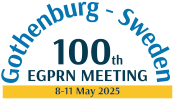Slovenian medical students’ perceptions of working in a rural environment
Marija Petek Šter, Mirjam Grebenc, Klara Gačnik, Urban Bleiweis, Zala Kotnik, Veronika Vezjak, Bor Vratanar, Ksenija Tušek Bunc
Keywords: medical students, rural medicine, curriculum, career choice
Background:
The shortage of primary care physicians, particularly family physicians in rural areas of Slovenia, is a significant issue. To make primary in rural areas more attractive, students must be sufficiently exposed to primary care in a safe and individualized environment in all stages of their career choice process.
Research questions:
Does exposing medical students to a rural working environment during their studies can positively influence their attitudes toward working in rural areas?
Method:
We developed a questionnaire based on a qualitative analysis of seminar papers submitted by students as part of the elective course “Medicine in Rural and Remote Areas" and a thorough literature review. A descriptive qualitative analysis was employed to assess students’ perceptions and experiences.
The questionnaire includes:
• Basic demographic data,
• Closed-ended questions using a 5-point Likert scale, and
• Multiple-choice questions.
The questionnaire will be piloted on a sample of 10–20 medical students to ensure clarity and reliability. After piloting, it will be distributed to all medical students enrolled at both medical faculties in Slovenia (University of Ljubljana and University of Maribor).
Results:
We anticipate that, in addition to well-known factors influencing the decision to work in rural environments (rural background and financial incentives) early exposure to the rural setting during medical studies will also have a positive impact on students’ willingness to consider rural practice in their future careers.
Conclusions:
Integrating rural medicine into the mandatory medical curriculum could play a critical role in increasing interest among young doctors in pursuing careers in rural areas.
Points for discussion:
Does your university offer students to meet with rural medicine during obligatory/elective courses?
How can family physicians enhance medical students’ interest in working in a rural environment during their family medicine rotation?”
#71

